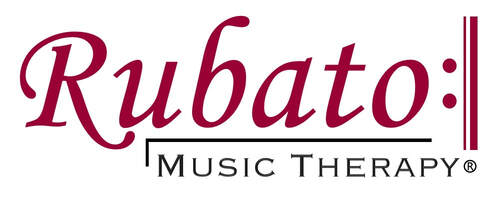Welcome to the Rubato Music Therapy Blog!
A resource for music therapists, music educators, and other professionals who work with individuals with intellectual disabilities, as well as their families and care providers.
|
Part 3 of this series explores pre-recorded, real-time, and other types of virtual services. There are many options out there besides the ones featured here; these are just the ones that I have experience using.
0 Comments
Part 2 of this series presents core values when planning for virtual services. These values may shift in priority over time.
For those of us music educators and music therapists who work at day programs, after-school programs, other nonprofits, private studios, or private practices, the process of rolling out virtual services isn't necessarily clear or defined. Even in many K-12 schools and colleges, teachers and administrators are struggling to determine policies for online learning. What do we do, in these unprecedented times?
Part 1 of this series discusses considerations when planning for virtual services. In alphabetical order, these are the top 100 most-requested songs in my music therapy groups for adults with intellectual disabilities (ranging in age from 22-60). This list is a good place to start for interns and music therapists who are building up their repertoire for this population. Many of these songs will be familiar to clients who have grown up in the United States.
Remember that each group consists of unique individuals with their own preferences! Ask your clients about their favorite songs. It's likely that multiple members of the group will enjoy some of the same artists. *The lyrics to some of these songs may be inappropriate for your setting - you can modify accordingly or use a different song! Some of us are fortunate enough to have sick days. Depending on your employer, your sick days may even be mandated by the government. I am very grateful to my employer for providing sick days, and for letting me take several days off when I lost my voice last week. (In case you're wondering, I'm not contagious and have since returned to work, although my voice hasn't quite made it back yet!)
This topic has been on my mind recently, as I organized and directed performances for an open house last week. Determining the ideal order of pieces for a concert never figured into my college coursework as a music industry studies and music therapy major, but after several years of practice, I feel like it comes down to two principles: EFFICIENCY and ENERGY. When possible, try to keep these concepts in mind when initially selecting pieces.
For those of you who aren't sure where to start when it comes to developing a program or setlist for a show, read on... I wholeheartedly recommend the Piano Adventures series by Nancy and Randall Faber. I have used these lesson books successfully with both children and adults with disabilities, and prefer them for the following reasons:
Perhaps you are an elementary music teacher, or perhaps you are a music therapist with a client who is interested in playing the recorder. Either way, you have found yourself looking for a recorder method. After comparing recorder methods at the local Music & Arts with those that I've previously purchased, I recommend It’s Recorder Time by Alfred d'Auberge and Morton Manus for the following reasons:
|
AuthorKirstie Gallacher-Ang, MT-BC Archives
June 2020
Categories
All
|
Hours |
Call or Text |
|
|
Please contact for current availability.
|
(714) 364-7561
|
